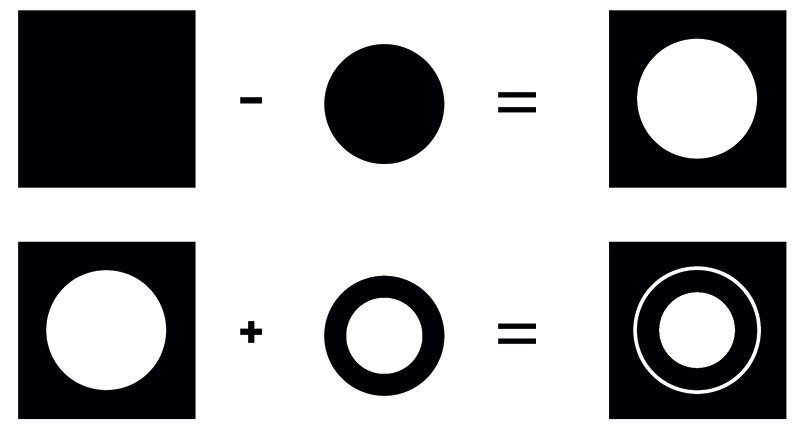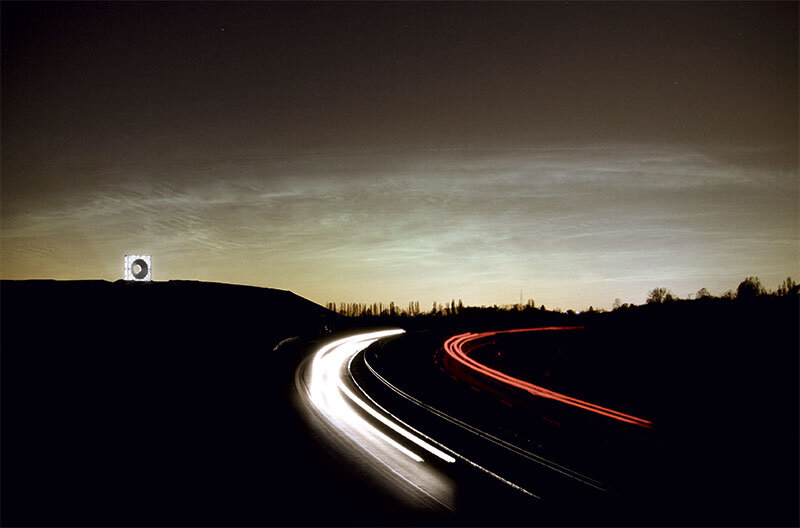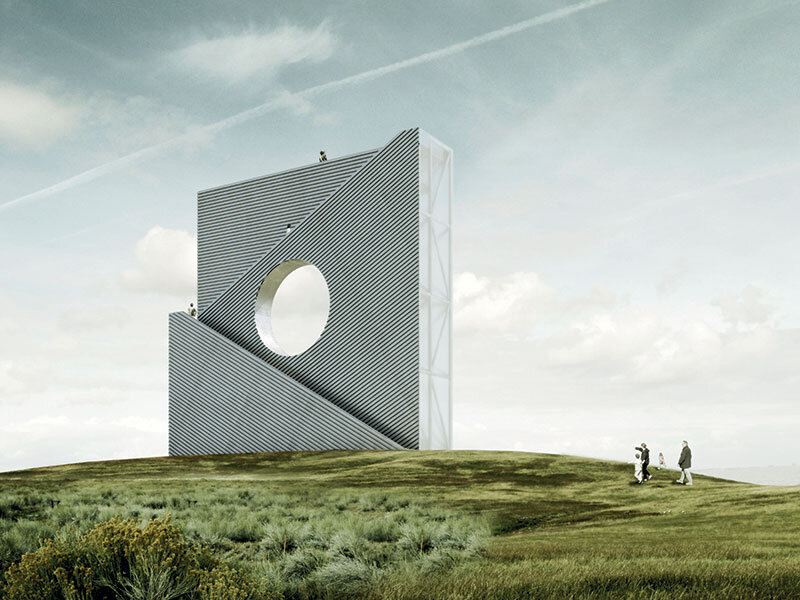STUDIO DMTW: Semnal / Landmark - Halde Duhamel


Anul / Year: 2011 Status: competition / 2nd round Client: RAG Loc: Ensdorf, Germania/Location: Ensdorf, Germany Program: Semnal/Typology: landmark Echipa/Team & credits: Marc Anton Dahmen, Maximilian Schmitz
| Cu ocazia încetării extracției de cărbune din zona Saarland RAG s-a decis realizarea unui concurs pentru un semnal topografic pe halda Duhamel.Din punct de vedere artistic, dar și arhitectural, obiectivul a fost de a crea un punct de reper care, prin claritatea sa formală, să poată fi recunoscut atât de aproape, cât și de departe, în timpul zilei și al nopții.
Elementele compoziționale folosite sunt formele geometrice simple: pătratul și cercul. Pătratul ca element compozițional primar simbolizează solul, materia și principiile ordinii create de om. „Gaura” din pătrat repezintă lipsa materiei, terminarea extracției cărbunelui. Cercul este elementul perpetuum mobile, reprezentând transformarea și refolosirea continuă a materiei. El indică ciclul de regenerare a energiei. Acum milioane de ani materia vie s-a transformat în energie fosilă, cărbune, energie folosită de omul modern pentru a supraviețui, astfel închizându-se cercul. Pe lângă simbolistica sculpturală, semnalul este o construcție funcțională. Sculptura poate fi folosită ca belvedere, cu ajutorul scărilor și al platformei. Pentru a sublinia contextul industrial, materialele folosite sunt ușor de pus în operă, ușor de întreținut și cu un raport preț-calitate bun. Trei tipuri de materiale au fost folosite, oțel galvanizat, tablă cutată și policarbonat. Structura este formată din profile de oțel galvanizat. Scările și platforma sunt formate din grătare de oțel galvanizat. Spatele structurii este acoperit cu tablă cutată, iar fața și părțile laterale sunt acoperite cu plăci din policarbonat. În timpul nopții semnalul este iluminat din interior cu tuburi fluorescente. Policarbonatul reflectând uniform lumina, astfel construcția devine un semnal luminos. |
| On the occasion of the end of the coal mining
era around the Saarland the RAG decided to set
up a competition for a landmark on top of the
acclivity Duhamel.From both, an artistic as well as architectural viewpoint the central objective of this design has been to create a landmark that, by its clarity of shape, is recognized from near and far, during day and night, as an unmistakable icon. Because of its simplicity and clarity it is very important to be conscious of its symbolic effect and the resulting interpretation.
Simple geometric shapes, that by themselves already exhibit a strong symbolic emanation, serve as the basic elements of this sculpture. The square, as its frontal projection, is its dominating silhouette. Since thousands of years in numerous cultures almost everywhere on earth the square symbolizes the soil, matter and also ordering principles created by men. The „hole“ within the square emblematizes the missing matter, so to say the removal of resources, the essence of open cast mining. The second core element is the circle, respectively an annulus having neither a beginning nor an end. Yet it indicates a direction. It stands for a cycle such as the recycling of energy. In fact, eternities ago the coal retrieved here has accrued from petrified living creatures, animals and plants. Over thousands of years it has stored their energy. Now the coal got mined and its energy is returned to currently living animals and humans, ensuring their survival and closing the cycle. Aside from its symbolic message a second important aspect is the usability of the sculpture by visitors. Its simple accessibility makes it a walkable piece of art and hence a piece of architecture. To emphasize the industrial context the choice of materials was guided by good value for money as well as ease of processing and future maintenance. Three types of materials were used, hot zinc dipped steel, trapezoidal sheet and polycarbonate. The skeletal structure consists of hot zinc dipped steel profiles. Stairs and platform are formed by zinc dipped grids. The backside of the sculpture is covered by trapezoidal sheet. The sides and the front is formed by polycarbonate plates. During the night the interior skeleton of the landmark is illuminated by fluorescent tubes. The structure of the polycarbonate plates refractors the light in the interior and the whole sculpture emits a uniform illumination. |


